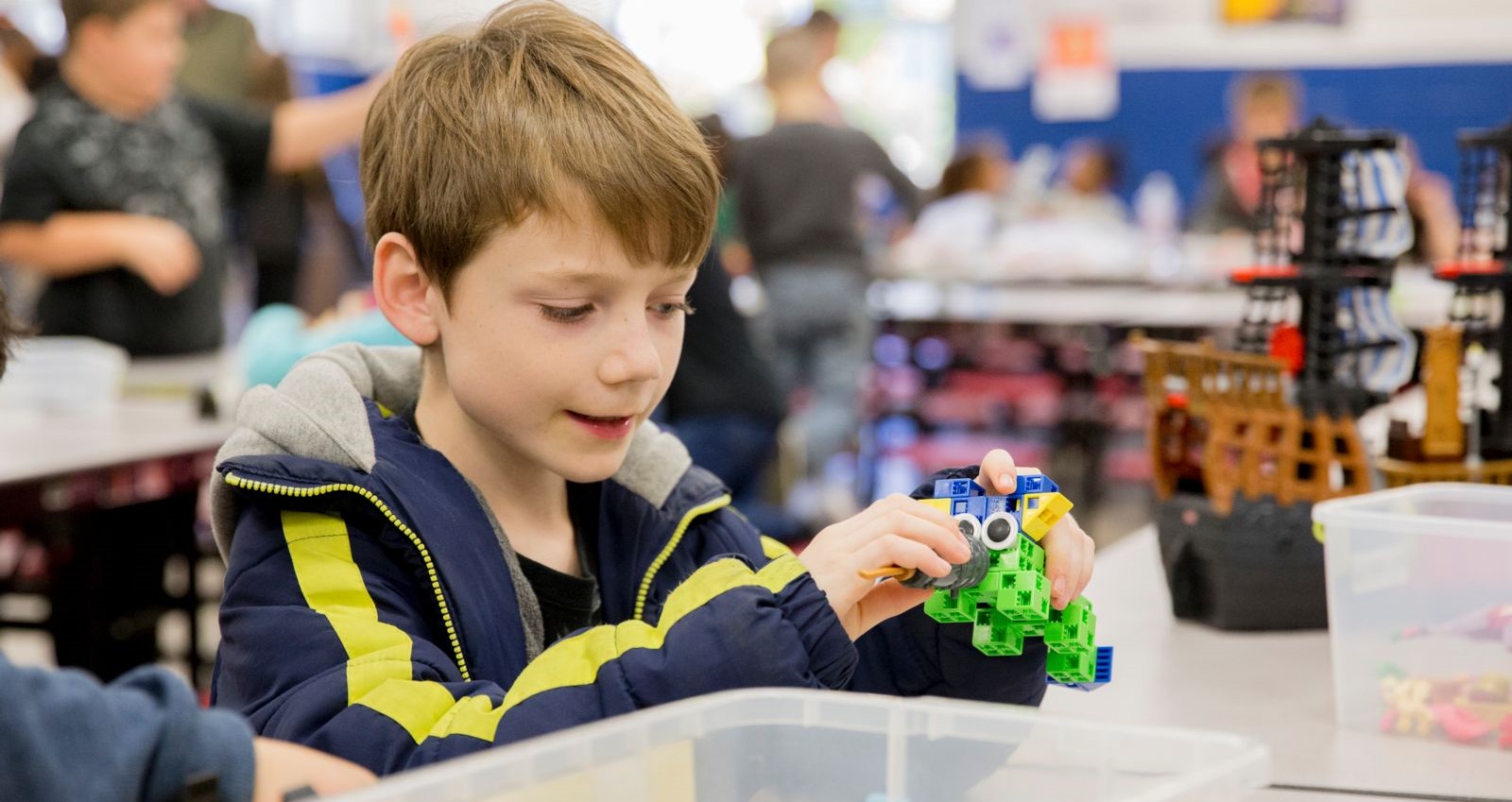STEM Learning

Afterschool programs are a natural space to provide engaging, hands-on science, technology, engineering, and math (STEM) learning. Show off the exciting activities you offer students, or engage event attendees in a hands-on STEM activity. STEM afterschool is greatly valued by parents and provides key opportunities for youth to discover possible career paths and build future work skills.

Use STEM for Social Good!
CYESS, the Collective for Youth Empowerment in STEM and Society, aims to expand opportunities for young people to build STEM skills and tackle the community and social issues they care about. Get inspired and learn about programs blending social good, youth empowerment, and STEM at the CYESS resource site.
Looking for fun and easy ways to highlight STEM during your Lights On Afterschool event? Check out these activities from STEM Next!
- Keeping the Beat Activity Bundle: In this career-connected learning activity bundle created specifically by STEM Next for afterschool programs, youth will explore how the heart, blood, and circulatory system work—and how these systems are affected by gravity on Earth and in space. Throughout the three, one-hour activity sessions, youth apply science and engineering practices, use math to identify patterns, and learn about careers that support astronaut health and fitness. Adapted from NASA eClips, these lessons connect Earth and Space Learning with Health and Life Sciences. Grade range: 4th–8th
- Learn How to Draw Artemis! NASA’s Artemis program is preparing to return astronauts to the Moon and pave the way for future missions to Mars. Through this creative activity, youth can download and color detailed illustrations of the rockets, spacecraft, and systems that will make these missions possible. As they draw, participants learn about the engineering and innovation behind deep space exploration. Programs can display their creations or share them online using #DrawArtemis and #NASAatHome. Learn more and download.
- Landing Humans on the Moon: Over half a century ago, on July 20, 1969, humans walked on the moon for the first time. Youth will take a look back at the history and legacy of our first small steps on the moon with this collection of activities, including videos to relive this amazing moment in our history. Grade range: 4th–8th
- My Moon Colony Design Challenge: Can we ever live on the moon? To make life on the moon possible, engineers must work together to imagine, design, create, and test advanced technologies to enable humans to inhabit the moon. Using the engineering design process, youth will brainstorm what people would need to live on the moon, design a fantastic moon colony, and decide how to power it. Youth will have an opportunity to investigate forms of energy and recognize the advanced technology that would be needed for humans to inhabit the moon and beyond. Grade range: 7th–8th
- Spread the Word to Teens About the Mars Mission Challenge! In this national STEM challenge led by Lockheed Martin, high school students take on the role of engineers and innovators to solve real-world problems of living and working on Mars. Youth teams will develop a proposal that addresses one of the critical challenges of sustaining human life on the Red Planet, from building habitats to supporting astronaut health and safety. Participants gain experience in research, design, and collaboration while exploring STEM career pathways in aerospace and engineering. Grade range: 9th–12th
Winning teams will receive professional mentorship, project funding, and the opportunity to present their ideas to an industry panel. One student team and educator will also earn a trip to Space Camp in Huntsville, Alabama.
Proposal submissions due December 1, 2025, at 5 p.m. MT. Interested teams should submit the interest form online.
- NASA Rocket Races Design Challenge: Few classroom topics generate as much excitement as rockets. In this educator guide, youth will have an opportunity to explore various facets of a rocket: its design, its power, and its ability. Youth will apply the scientific method to make predictions, collect and interpret data, and practice durable skills necessary for success in a STEM career. Grade range: 5th–8th
- The Quest for the Crystal of Innovation: The Manufacturing Institute has developed The Quest for the Crystal of Innovation (Innovators Quest), a gamified experience for grades 4-9. This turnkey solution allows manufacturers to engage students in a fun, challenging, and age-appropriate way, either in classrooms or at community events like summer camps, expos, and Manufacturing Day on October 3. The Innovators Quest helps students discover their strengths while encountering tasks that incorporate core manufacturing skills. The activities promote teamwork, communication, and problem-solving while introducing students to key concepts like additive manufacturing, aerospace engineering, electromechanical components, robotics, and quality control. Learn more about this tool and how you can sponsor a kit to use in your community here.
For even more quick wins and lasting impact, explore STEM Fun Facts to spark curiosity with your students and check out STEMfinity’s Grant Resource List to discover funding opportunities that can power your program forward. For programs looking to go deeper, STEMfinity’s STEM 101 Professional Development series equips staff with practical strategies to bring hands-on STEM learning to life. Find these and more free tools at www.stemfinity.com.
Get inspiration from past Lights On events for small group activities!
Find more ideas on our database
Throwing a Newsworthy STEM event
If you’re looking for ideas and suggestions for how to talk compellingly about your STEM programs and put together a STEM-themed Lights On Afterschool event, this webinar is for you! We all know that afterschool programs are a great way to get children and youth excited about STEM and should be integral partners in STEM education.
Yet all too frequently, parents, community leaders, and policymakers don’t understand how big of an impact that afterschool programs can have on STEM education. Hosting a Lights On Afterschool event presents a unique opportunity to showcase the amazing work that you are doing in the STEM world to your community and to the stakeholders who can make a real difference for your program.